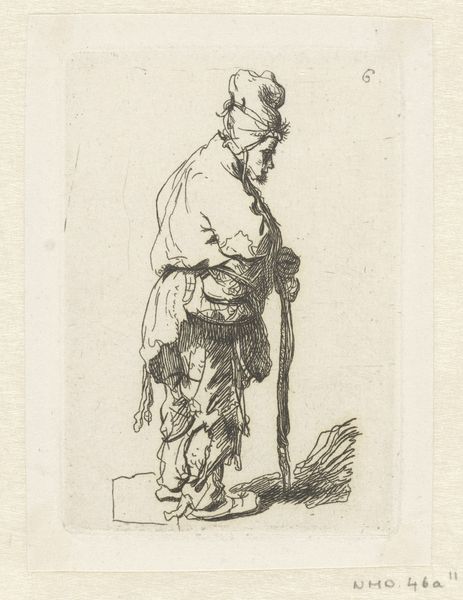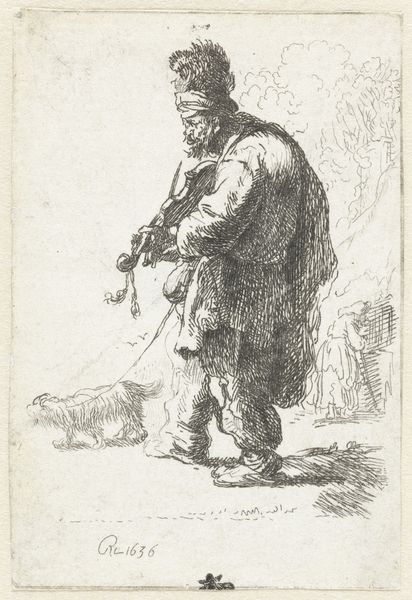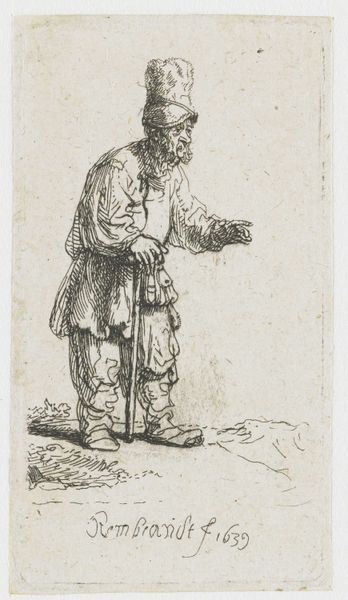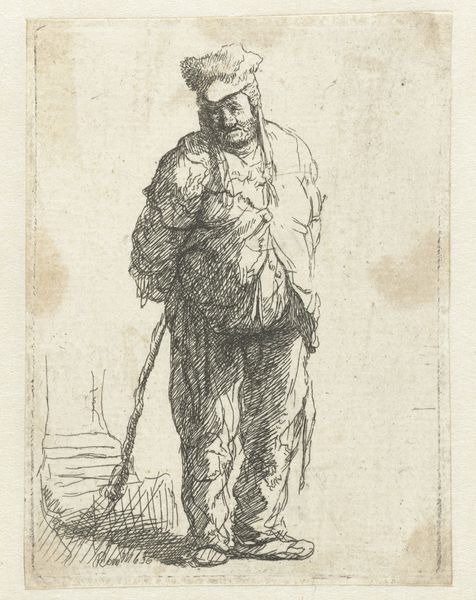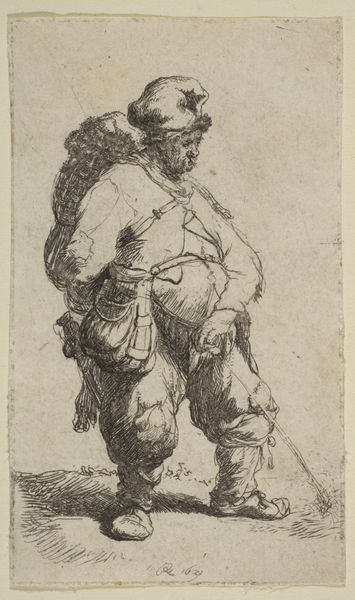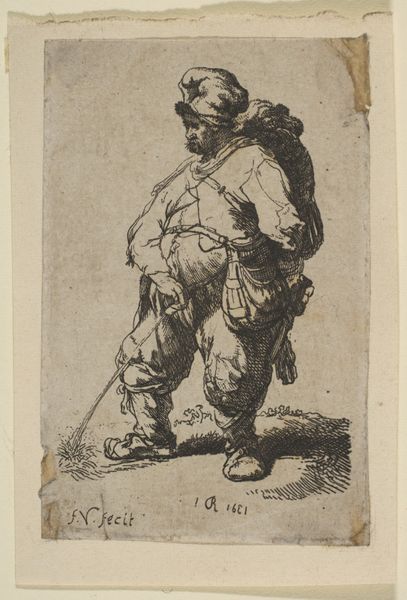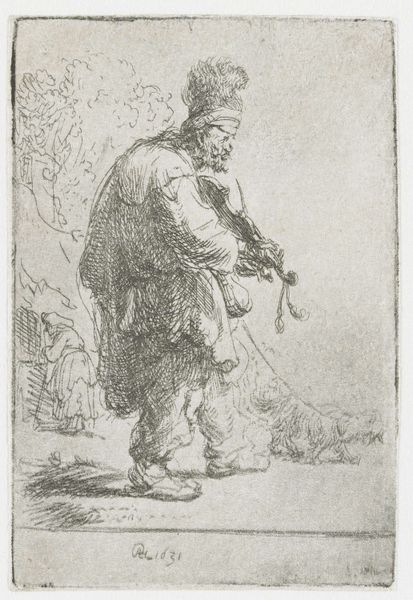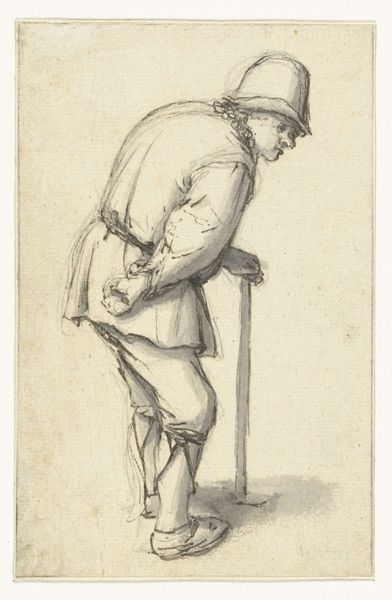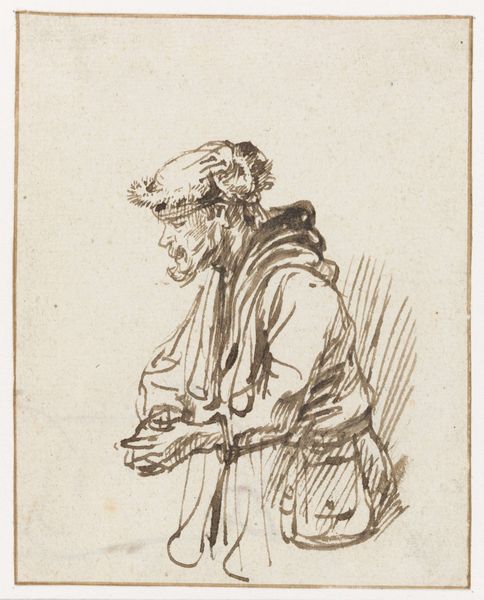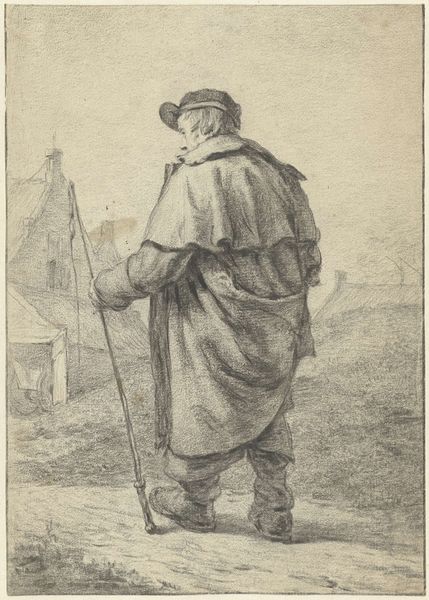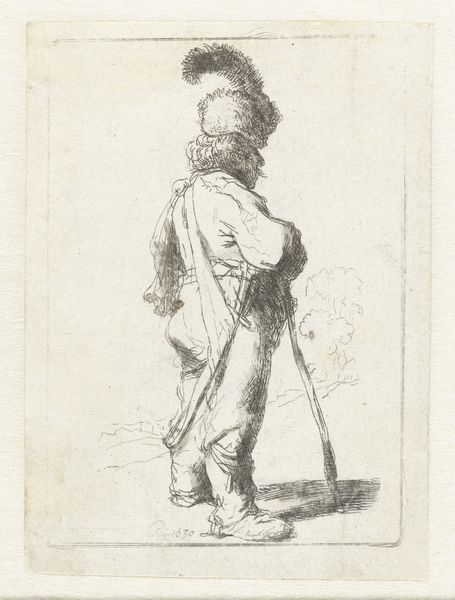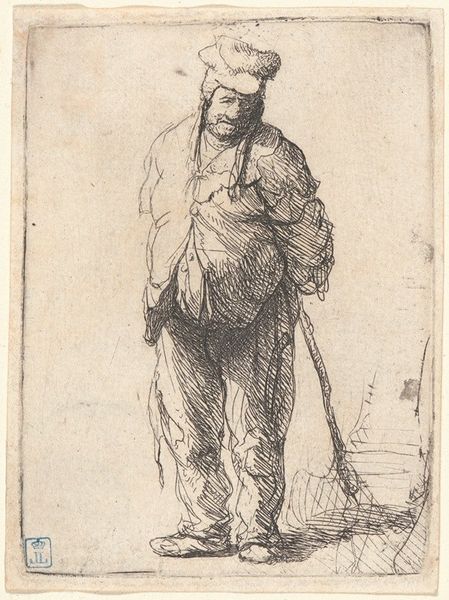
drawing, print
#
portrait
#
drawing
# print
#
figuration
#
realism
Dimensions: Sheet: 3 3/8 x 2 1/2 in. (8.6 x 6.4 cm)
Copyright: Public Domain
Curator: This is "Beggar Leaning on a Stick (reverse copy)," a print and drawing by F. Bradshaw, made in 1851. Editor: The figure is hunched over and looks burdened. How do you interpret this work? Curator: Well, first, let’s acknowledge this is a copy after an etching by Rembrandt, a key figure in interrogating social dynamics through art. Consider the socio-political context: 1851, a time of immense upheaval, burgeoning industrialization, and stark class divides. Bradshaw, in recreating this image, is participating in a visual dialogue about poverty and marginalization. This print engages in a complex conversation about class, looking at who has the power to represent whom and to what end. Editor: That makes sense. So you're saying that copying the Rembrandt drawing isn't just an artistic exercise? Curator: Precisely. It’s an intervention, a re-presentation across time, prompting us to reflect on the cyclical nature of poverty. It almost asks, who is this representation serving, what hierarchies are involved, and who ultimately benefits? Think about the gaze, who is Bradshaw’s intended audience? Editor: So Bradshaw isn't just depicting a beggar, they're forcing a confrontation with social inequality by drawing attention to Rembrandt’s original representation and its enduring relevance? Curator: Exactly! And the act of copying invites us to examine issues of originality, authorship, and power. The print asks us, how do we engage with representations of those on the margins of society? Does it incite empathy, or does it reinforce existing power structures? Editor: I never thought of it that way before. I guess I saw it as just a historical portrait. Curator: And now? Editor: Now, I see it as a challenge to consider representation, power, and inequality – and whose voice is being amplified through art. Curator: Precisely. It's a powerful, poignant echo across time.
Comments
No comments
Be the first to comment and join the conversation on the ultimate creative platform.

